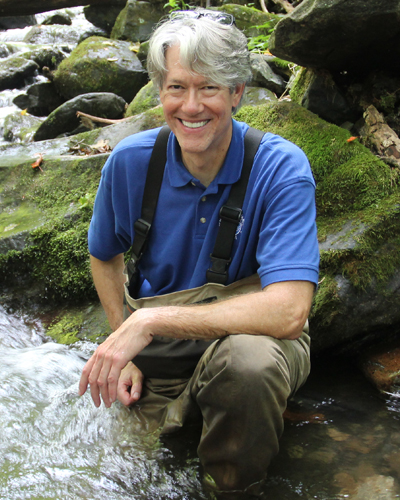It's unlikely the Tennessee Aquarium will add a cave shrimp exhibit anytime soon, but that isn't stopping Dr. Bernie Kuhajda from learning everything there is to know about their existence in North America.
Kuhajda, an aquatic conservation biologist at the aquarium's freshwater conservation institute, was recently awarded a $5,000 grant for his cave shrimp research. He is one of a tiny class of biologists in the United States studying the rare critters that are offering valuable insight into freshwater health and biodiversity in the region.
"It's kind of like the last great frontier in the United States," Kuhajda said of cave wildlife.
The grant money will help with travel expenses and genetic research for Kuhajda and research partner Kevin Roe, a professor in Iowa State University's Department of Natural Resource Ecology and Management.
The duo has been studying cave shrimp for several years since they met at the University of Alabama, where both earned Ph.D. degrees in biology.
In North America, cave shrimp are known to dwell in Alabama and Kentucky, although a surface shrimp in California is a close relative. There are more than 450 cave shrimp species total, but they are considered endangered in Alabama and Kentucky - Kuhajda said the most he's ever seen on a single caving trip is five.
"By doing this work, we understand how many different [types] of these cave shrimp species there are," Roe said. "In the past, we thought there was a single species in Alabama. Now we know there are two. From a perspective of understanding biodiversity, you need to know how many species and what exactly it is you're protecting."
When the $4.5 million facility housing the aquarium's freshwater conservation institute is complete, Kuhajda will have a genetics lab for his work.
Roe now handles the genetics work in the duo's cave fish research, and Kuhajda said he will continue to work with him. They are working on a project to extract DNA from cave shrimp on display in a Mississippi museum that were collected between 1958 and 1960.
"We're it," Kuhajda said of other biologists studying cave shrimp in the U.S. "There are two people that study the morphology of cave shrimp but that's the extent of it."
Both men say their research yields valuable information about the health of the groundwater, which is vital for knowing how to protect cave ecosystems and ensuring drinking water is safe.
"We all need fresh water, and understanding these organisms that also need fresh water is vital," Roe said. "It's an important message to give to people."
Contact staff writer David Cobb at dcobb@timesfreepress.com or 423-757-6249.

